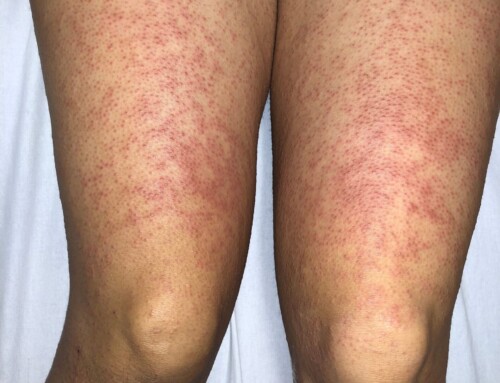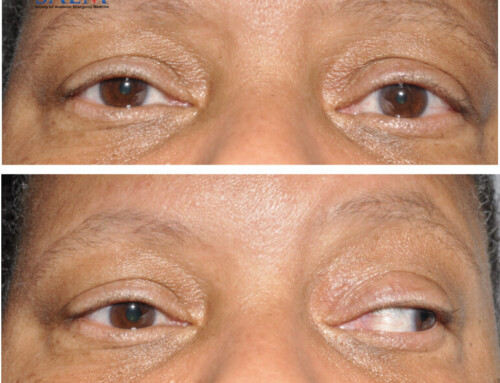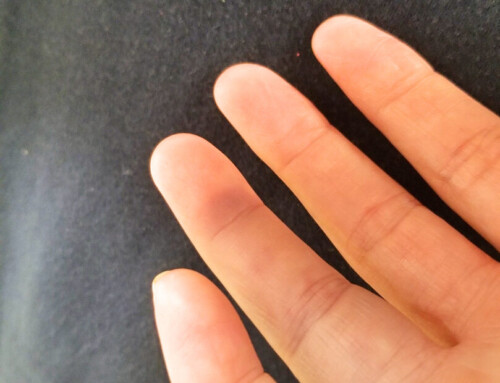
A 45-year-old male status-post right nephrectomy secondary to a renal mass presented to the emergency department with right-sided flank pain. He endorsed low-grade intermittent right-sided flank pain since the nephrectomy one year prior, associated with an increasingly enlarging mass extending laterally from his right abdomen. Over the course of the past several days, the mass had become larger and more painful. He denied any fevers, chills, or signs of systemic illness, and reported no urinary symptoms.
Vitals: T 98°F; HR 88; RR 17; BP 121/67; SpO2 97% on RA
Respiratory: Clear to auscultation in all lung fields. No diminished breath sounds in the right lower lobe.
Abdomen: Soft, non-tender to palpation. 10 cm mobile, non-erythematous mass protruding from the right flank.
White Blood Cell (WBC) Count: 5.5 K/uL
BUN: 10 mg/dL
Creatinine: 0.88 mg/dL
Lactate: 1.1 mmol/L
Urinalysis (UA): WBC 0-5, Neg Bacteria, Neg Nitrites, Neg Leukocyte Esterase, Neg Ketones
The major risk factor that predisposes patients to the development of abdominal wall hernias is a decrease in the strength of the abdominal wall musculature. Additionally, cardiovascular co-morbidities, such as obesity, hypertension, and diabetes, can increase the risk. Urologic procedures predispose patients to flank hernias in particular due to the postoperative weakening of the muscular wall. The patient in question had a right-sided nephrectomy, which likely predisposed him to the development of this hernia (Figure 1).
The critical complications that can develop secondary to a hernia are incarceration and strangulation (which can result in subsequent necrosis). Initial management focuses on a rapid assessment to evaluate for these complications, while also providing pain control. Incarcerated hernias are erythematous, edematous, tender to palpation, and unable to be reduced. If strangulated, patients will additionally have signs of peritonitis. Ancillary laboratory tests, such as an elevated lactate, may also suggest ischemia secondary to strangulation. CT imaging should be acquired in cases of suspected incarceration or strangulation (Figure 2: CT showing right-sided abdominal wall hernia containing fat and non-obstructed bowel loops without evidence of strangulation). Patients without evidence of emergent hernia complications can be managed with outpatient surgical follow-up.
Take-Home Points
- Abdominal wall hernias are classified by their location: ventral, groin, pelvic, and flank.
- Major risk factors for their development include prior abdominal surgeries that weaken the musculature as well as cardiovascular co-morbidities.
- Evaluation should include a physical exam, laboratory work (particularly a complete blood count, comprehensive metabolic panel, and lactate), and CT Abdomen/Pelvis.
- If an incarcerated or strangulated hernia is suspected, surgery should be consulted emergently.
- Hernias that can be reduced at the bedside can be managed with outpatient surgical follow-up.
- Pastorino A, Alshuqayfi AA. Strangulated Hernia. 2022 Dec 19. In: StatPearls [Internet]. Treasure Island (FL): StatPearls Publishing; 2023 Jan–. PMID: 32310432.
- Zhou DJ, Carlson MA. Incidence, etiology, management, and outcomes of flank hernia: review of published data. Hernia. 2018 Apr;22(2):353-361. doi: 10.1007/s10029-018-1740-1. Epub 2018 Jan 27. PMID: 29380158.
Copyright
Images and cases from the Society of Academic Emergency Medicine (SAEM) Clinical Images Exhibit at the 2023 SAEM Annual Meeting | Copyrighted by SAEM 2023 – all rights reserved. View other cases from this Clinical Image Series on ALiEM.

Rashmi Koul, MD
Boston Medical Center

Latest posts by Rashmi Koul, MD (see all)
- SAEM Clinical Images Series: Bulge in the Belly - December 8, 2023

Jennifer Frush, MD
Boston Medical Center

Latest posts by Jennifer Frush, MD (see all)
- SAEM Clinical Images Series: Bulge in the Belly - December 8, 2023

Andrew Mittelman, MD

Latest posts by Andrew Mittelman, MD (see all)
- SAEM Clinical Images Series: Bulge in the Belly - December 8, 2023
- SAEM Clinical Images Series: Man with a Recurrent Rash - November 10, 2023
- SAEM Clinical Images Series: Wolf in Sheep’s Clothing - November 6, 2023

Ivan Zvonar, MD
Boston Medical Center

Latest posts by Ivan Zvonar, MD (see all)
- SAEM Clinical Images Series: Bulge in the Belly - December 8, 2023




